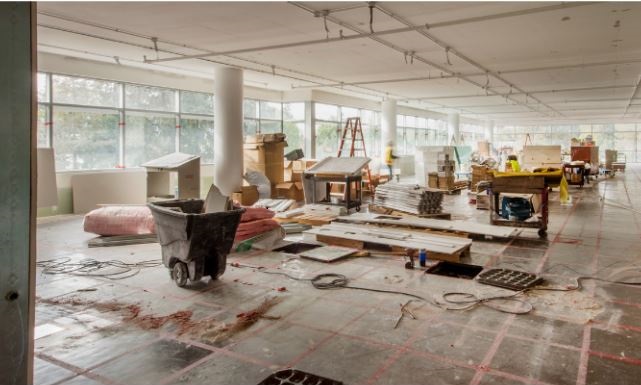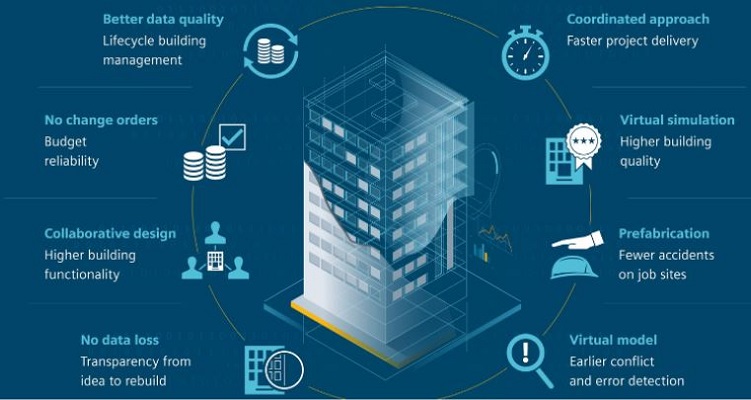Designing Office Spaces in Under-Construction Buildings: Challenges & Tips
Designing an office space while the building is still under construction can feel like trying to solve a puzzle with moving pieces. You would desire your future office to represent your company’s best character, efficient, and functional, with unfinished walls. Increasingly, businesses are discovering that sophisticated planning is going to be what it will take in order to design offices that function for workers, today and in the future.
To have an experienced construction company assist you at this point is not only helpful but necessary. With construction and design occurring concurrently, you can predict structural requirements, design for maximum performance, and escape the expense of future redesigns.
But it is never without challenges to proceed through this process. Close schedules, unforeseen site conditions, and communication breakdown are liable to demolish even the best of intentions.
In this blog, we’ll explore the most common hurdles companies face when designing offices during construction and share actionable tips to overcome them.
Whether you’re collaborating with architects, interior designers, or a local construction company in st louis, you’ll discover how early coordination can transform an empty shell into a workspace that drives innovation and growth.
Understanding the Unique Context of Under-Construction Office Design
Office design in a building that’s being built is not just choosing wall colour and office equipment—it’s choosing the infrastructure that will determine how your employees operate for decades to come.
When you begin with a building company from the ground up, you can have your design concept aligned with the blueprints of the building structure when they start.
This allows central areas such as electricity cable runs, plumbing, airflow, and room layouts to not all wrestle with your working requirements.
Rather than having to retrofit ideas later (which will be bound to be costly and time-consuming), you can make an impact on the building of the space itself.
Major benefits to designing early:
- Greater Flexibility: Alter layouts before fixed walls and fixtures.
- Cost Savings: No longer have to pay for costly post-building modifications.
- Future-Proofing: Build with enough flexibility to scale and adapt to changing work patterns.
Do you need to conform to a set plan or mould it to the specific workflow of your organisation?
Master planning lets you create an office that is effective today but adaptable tomorrow.
Key Challenges in Designing Office Spaces in Construction
Even if designing in construction helps, it is not hassle-free. Knowing these problems helps you prepare:
Timeline Coordination: Design and building timeline coordination can be tricky. One delay component can impact the entire project.

Structural Limitations: At times, the structure of the building will not allow some design elements you would want.
Budget Risks: Changes in building halfway through usually cost money, and this gets out of hand and spirals unless handled properly.
Safety Concerns: Proper planning is needed in the management of building sites to provide designer and worker safety.
Communication Disruptions: Disruptions between the contractor, customer, and architect can create design discrepancies.
Having a solid process and staff on board to identify issues early on really does make a positive impact in allowing the project flow to go smoothly.
Strategic Office Space Design Planning
And then how do you deal with these obstacles? The response begins with planning.
Create Realistic Schedules: Divide the project into milestones with concrete deadlines for building and design processes.
Conduct Feasibility Studies: Try out the building plans extensively before agreeing on your design.
Prioritise Flexibility: Create versatile floor plans which you can adapt when your business grows.
Use Technology Effectively: Building Information Modelling (BIM) technology identifies clashes between design and building plans in advance.

Preventive planning prevents surprises and keeps your project schedule in its original shape.
Collaborating with a Construction Company for an Effortless Implementation
Collaborating with your st louis construction company from the very start is the best thing you can do. Their experience prevents problems from becoming expensive blunders.
Important cooperation strategies are:
- Clearly Defining Roles: Everyone involved should be aware of their role.
- Open Communication: Give feedback regularly and communicate freely to avoid misconceptions.
- Synchronising Revisions: Synchronise revisions to ongoing construction to eliminate rework.
If your design team and your building partners work together like a well-oiled machine, what you have is a stunning, cohesive, functional workspace.
Smart Design Ideas for Buildings Under Construction
Construction planning allows you to free-form design, designing to create elements that have both form and function. Keep in mind:
Natural Light & Ventilation: Design window placement and open space for optimal light and ventilation.
Space Zoning: Allow space for teamwork, individual work, and facilities such as break rooms and wellness rooms.
Future Scalability: Use modular furniture and convertible floor plans that can scale for future growth.
Sustainability: Use green materials and energy-efficient systems right from the start.
With good professional construction in st louis, you can easily integrate these design features into a building.
Cost Control and Budget Optimisation
One of the major problems during design in construction is over-budget. To avoid it:
Prevent Scope Creep: Remain with the good design unless a change is absolutely required.
Value Engineering: Get functionality and aesthetics without unnecessary expense.
Negotiate In Advance: Negotiate cement materials and labour rates in advance when prices change.
Verify Progress: Check accounts records and progress reports frequently.
Cost control in advance prevents your project’s budget and avoids surprise last-minute expenses.
Safety, Compliance, and Risk Prevention
Sites are unsafe unless properly controlled. Keep your project fully compliant with all legislation and safety measures:
Adhere to Codes: Adhere to codes and building codes, and legislation from the very beginning.
Site Safety Practices: All contractors and designers must adhere to site safety legislation.
Risk Assessments: Assess risk potential of design-driven structural changes.
Insurance Coverage: Offer liability and construction insurance coverage.
A professional construction company will ensure that all that has been said is done professionally.
Tips for Handover and Post-Construction Adaptation on
Even with all the planning, some adjustments will still be needed after building. To ensure readiness:
Gentle Inspections: Do a walk around the property to ensure all is as per the approved design.
Manage Last-Minute Changes: Carry out any finishing touches before handover.
Maintenance Strategies: Create a facilities management approach for maintenance.
Gather Feedback: Receive feedback from employees in readiness to help with future better projects.
Efficient handovers conserve time and get your workplace up and running immediately.
Conclusion
Designing an office space in an under-construction building can seem daunting at first, but when approached strategically, it becomes an incredible opportunity.

By planning early and aligning with a trusted construction company in st louis, you’re not just building walls and workstations—you’re shaping a future-ready workspace that reflects your brand and supports your team’s growth.
Consider this: Would you prefer to wait for the building to get finished and perhaps have to make expensive overhauls, or work together initially and have a seamless design that works in tandem from the beginning? The successful companies are generally those that will spend money on forward-thinking choices and work with those who know building and design.
Your workspace is not merely a physical area; it’s where potential is constructed, teams are established, and clients form their very first impression of you.
And so, in operating from here on forward on your project, do the following: Ask yourself, How are you going to use your space to work for you, now and days and years ahead?
If you’re ready to create an office that inspires and functions at its best, partnering with experienced professionals is the smartest move. Whether you’re exploring layouts, optimising your budget, or coordinating timelines, having the right construction company in st louis by your side can make all the difference.
Plan now, and turn that hollowness of an incomplete skeletal structure under-construction building into a workplace that encourages innovation, productivity, and future prosperity. Your future office—and your employees—won’t accept anything less.
